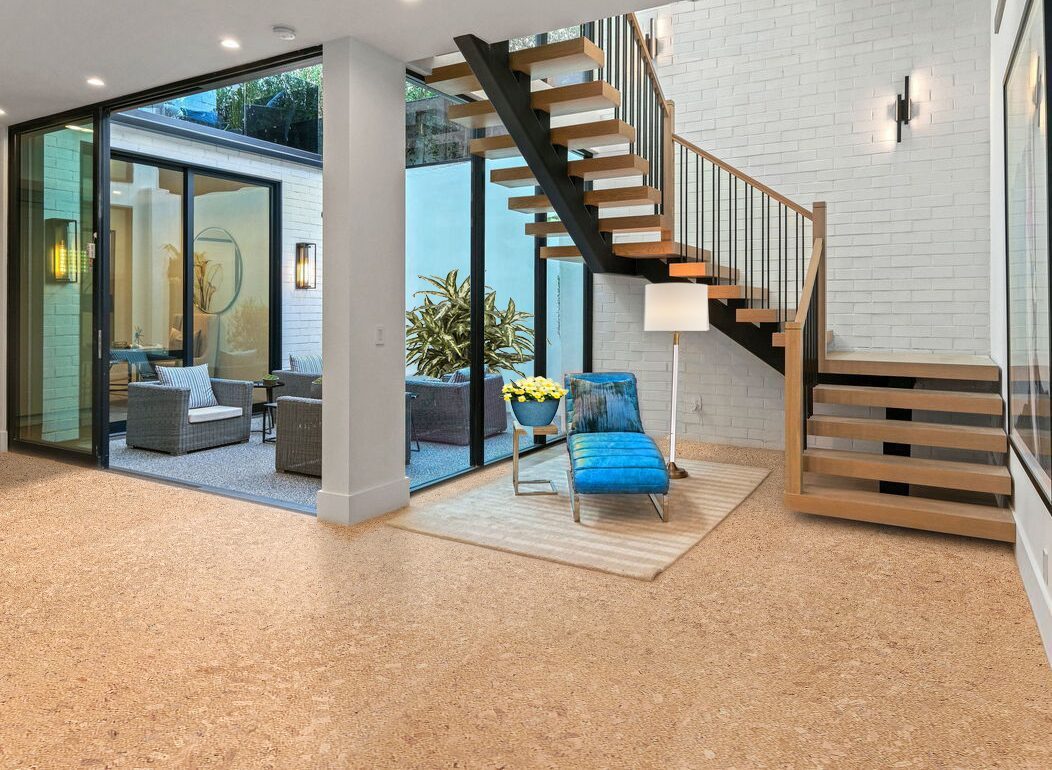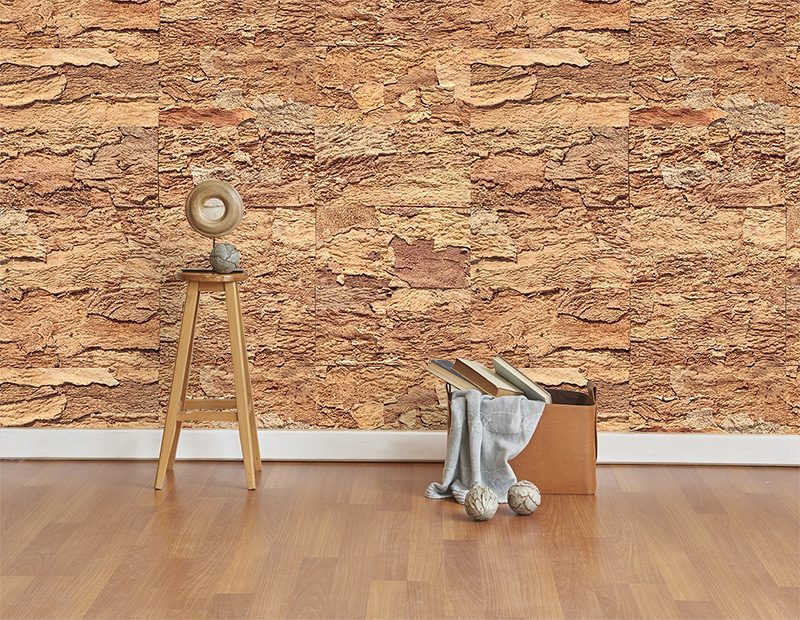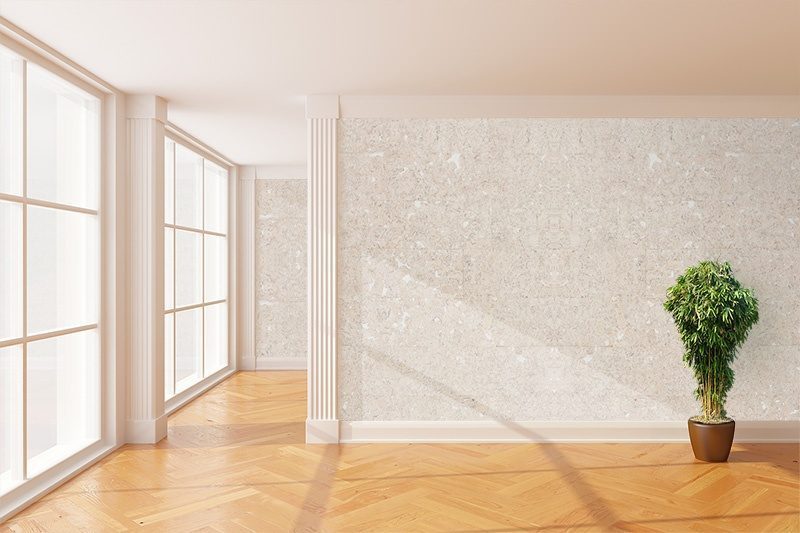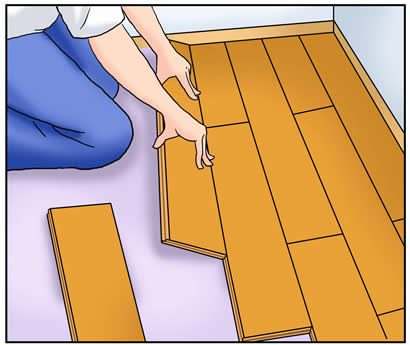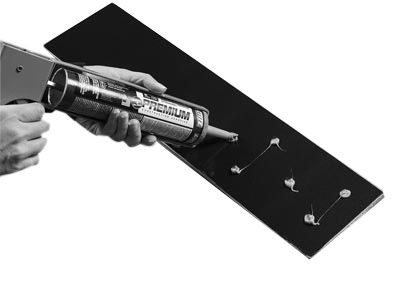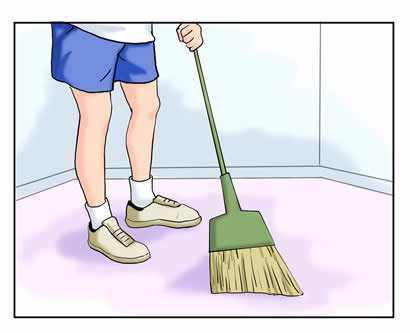Cork Flooring FAQs Frequently Asked Questions:

Shipping
How to save shipping cost?
How quickly can you ship my order?
How does a residential delivery work?
What are the shipping policies?
Where are terminals?
How can I quote shipping cost online?
How to Select Products
Why should I choose a floating floor? What are the benefits?
Why should I choose cork-based flooring?
Can cork flooring be installed in the kitchen and the bathroom?
Is cork a good solution for my busy family?
What’s the difference between you cork products and your competitors’ ?
Installation
Does cork floating flooring require underlayment?
Can I install my cork flooring myself?
I want to install cork glue down tile in my basement – is it possible?
Could I adhere cork glue-down tiles to particle board?
Can cork tile be installed over sheet vinyl or linoleum tiles?
What type of sub-floor do I need for a floating floor?
Can I install a floating floor over top carpet like Berber?
What type of sub-floor do I need to install glue down cork tiles?
Can I use OSB or chip board under a glue down cork flooring?
Can I use another form of adhesive with the glue down tiles?
What happens if I use another type of glue?
Why do I need to site-finish my factory-finished cork flooring?
Why do I have to use Loba Supra on my glue down cork flooring?
Why should I use cork underlay for cork floating floors?
Maintenance
Why do I need to put a polyurethane finish on my floating floor?
Can I wax my floor?
How do you clean a cork flooring?
Can this product be sanded?
What can I do to make old cork flooring “come to life”?
Green Flooring
Is natural cork flooring a healthier alternative to other floorings?
Is there any formaldehyde in your products?
Soundproofing
Is cork underlay a good choice for soundproofing?
What makes cork such a good insulator?
Waterproofing
Are cork floors affected by moisture and temperature changes?
How does cork flooring hold up with pets and their “accidents” on the floor? Their urine has ruined my carpets?
Where to Use
Can you install a cork flooring over radiant heat?
Can we install a cork flooring in the basement?
Can I use Forna glue-down tile as wall tile?
Would Forna cork tiles work well for shower walls?
Is this cork glue down tile good for bathroom floors?
Is cork glue-down good for staircase? How is it installed?
Question 37: Where can I install cork in my home? Cork Flooring Colors?
Is the color of all cork flooring consistent?
Does cork fade in sunlight?
Cork Flooring durability
How durable is cork?
Will my pets damage the cork floors?
Will cork flooring resist heavy furniture or high heels?
How to move heavy objects (fridge or stove) over your flooring?
How well does cork flooring hold up to vacuuming?
Will my dogs damage a cork flooring?
General Questions
Are cork floors new; or have they been around and I just haven’t heard about them?
Will my floating floor sound hollow when I walk on it?
Price
What is the reason behind your significantly lower prices compared to your competitors?
As the direct distributor of Forna Cork Flooring, we offer our products directly to customers, eliminating the additional markups associated with purchasing from national retailers. By buying directly from us, you benefit from our competitive pricing structure.
TOP
Why should I choose a floating floor? What are the benefits?
Floating floors offer, for a moderate price increase in material costs, the benefit and ease of installation. If it is a DIY project or you are hiring professionals to install your cork floating floor, you will appreciate the benefits of an “easy to lay” floor. A handyman with a tape measurer, saw and some spare time can lay their own floor and professionals will offer their “laminate floor” pricing which means you will save on the costs of installation.
A Few other points in favour of a floating cork floor:
- I) Does not require underlayment (many people choose to use cork underlay for extra comfort with a small price tag)
II) Perfect for basements – can be laid over top of concrete (add cork underlay to insulate a cold basement or to add extra noise abatement)
III) Can be laid directly over old flooring (hard flooring that is flat and level; carpets must be removed)
IV) Nice option over in-floor radiant heating (hydronic or water based heat only; the thinner the cork plank the better the heat transfer)
Why should I choose cork-based flooring?
Cork floors are as durable as other hardwood flooring materials and many times they are longer wearing than other flooring products. Cork can self heal, meaning that if you drop something and dent the cork it will restore itself to its original state.
Cork is a natural product that is considered Eco friendly and a renewable resource. Cork is hypo allergenic as well as being resistant to mold, mildew and insects naturally. Cork’s cellular structure is the perfect “insulator” – both acoustic and thermal. Cork is naturally fire resistant and when it does burn it will not create toxic chemicals found in other flooring materials.
TOP
Can cork floating flooring be installed in the kitchen or the bathroom?
Kitchens – “Yes”; Bathrooms – “NO!”
Kitchens are the obvious places for cork flooring as we spend a great deal of our time in the kitchen standing cork flooring helps to relieve tension in joints as it is the softest natural hard surface flooring available. A floating floor cannot be made waterproof, but it can be made water-resistant! By applying two coats of Loba 2K Supra AT water-based polyurethane over your Forna Cork floating flooring, you can reduce the risk of water damages caused by every-day spills.
Bathrooms require a glue down application due to the much higher amount of water that can cause damage in this area. The High-Density Fibreboard (HDF) that makes up the Uniclic system is not waterproof and can damage if water manages to migrate in a seam or under a baseboard. The HDF layer is also prone to “puffing” or absorbing water when exposed to high humidity on a regular basis. Many bathrooms can have humidity levels of 85%-100% and these levels are considered disastrous for HDF. For bathroom installations please refer to our solid glue down cork tiles.
Cork is an extremely durable product but like all surfaces it can be show wear however with our Loba 2K Supra AT polyurethane you are able to maintain your beautiful cork flooring for decades easily. An example of a well-maintained cork floor that has been in use since the late 19th century is The US Library of Congress installed cork flooring when it was being built. It opened its doors in 1897 – the cork flooring was and has remained beautiful and functional for over a century.
Will my floating floor sound hollow when I walk on it?
A: NO! Cork is an acoustic insulator; it will not sound hollow when you walk on it. Most strata councils are now recommending sound reducing products that meet IIC & STC standards which cork flooring and underlayment are amazing products in demand for just this reason. You may wish to install cork underlay under many styles of floating flooring to reduce the impact sound levels. Of course we will always recommend our floating floors to achieve the highest IIC & STC results.
Is cork a good solution for my busy family?
YES! For a busy family, we recommend some extra TLC for your floors. We recommend 2 additional coats of our polyurethane sealant after you have installed your floor. This will further protect your floors and keep top surface scratches from penetrating to the cork layer below. Once complete, this extra treatment will ensure your floors stay beautiful for many years to come. Sealing the flooring right after installation insures the delicate edges of the cork on each plank are glued together protecting them and the locking system from damage.
What’s the difference between your cork products and your competitors’ ?
Our finishing! All our flooring products are finished with three layers of water based polyurethane varnish that is produced in Europe. This water-based polyurethane provides a clear finish and does not produce any off gassing or VOC’s. You can refinish your floors any time you feel the need without the need to use aggressive chemical strippers as Loba 2K Supra AT polyurethane does not yellow or crack over time.
Is cork flooring a healthier alternative to other flooring?
Yes. Natural cork flooring is a great alternative for allergy suffers since dust, mold, mildew and insects are unable to establish themselves as they do in carpet. Those of us who suffer from knee, back and/or joint pain, find the combination of our cork flooring coupled with our cork underlay a great alternative to standing on cold tile or linoleum.
Why do I need to put a water based polyurethane finish on my floating floor?
For warranty compliance we require you to apply 2 coats of our Loba 2K Supra AT polyurethane to all our cork floors. This seals the plank seams, provides a waterproof coating and helps to prevent scuffing / denting. This extends the life of your cork floor. Should your floor need recoating in the future simply do a light sanding and apply a coat of Loba 2K Supra AT polyurethane and watch the original finish come back to life.
Always use a water-based polyurethane recommended by Forna. A solvent based products will ruin the finish on your floors voiding our 10 year Residential Warranty.
Will my pets damage the cork floors?
Usually not however large heavy active dogs may cause nail dents which 80% of the time will self heal but the are visible often as the pets are always active in the home. Cork floor are more forgiving than hardwood because of their ability to self heal when hardwood is damaged it needs refinishing. Most cork floors and cork tiles come finished in three coats of water-based polyurethane you will want to apply an additional two coats of our Loba 2K Supra AT polyurethane after you install your floors. This seals the seams and prevents pet accidents from seeping into the locking system and creating odors in between the planks.
Can cork flooring resist heavy furniture or high heels?
Yes. Better than you might think, cork has what is referred to as “cellular memory”. Just like “memory foam mattresses”, cork will spring back after being heavily compressed. In fact, it will regain 95% of its original form after being compressed down to 50% of its thickness. There is no other natural flooring product that can do that! But like all “high priced flooring options” we recommend you protect your floors by using furniture coasters under your semi-permanent furniture (sofa, stove, refrigerator, armoire, china cabinet, etc.) and self adhesive felt pads under your moveable furniture (chair legs, TV trays, etc.).
As for stiletto heels, you can relax. These types of shoes rarely cause permanent damage. To cause a permanent indentation, a person would have to be several hundred pounds in weight and stand in one place for many, many hours (think of a grand piano standing on one leg) …not something your floor is likely to experience! However as with furniture be certain that the shoe is properly heeled as exposed nails from damaged heels will cause tears in the cork, depending on the design of your flooring this will be in 90% of the cases something that you may never notice or is repairable.
Are cork floors affected by moisture and temperature changes?
Yes. Just like wood, cork floors are subject to expansion and contraction due to climate. There is no need to panic. Only in the most extreme conditions (-30 Celsius or below or humidity levels consistently below 15%) will our flooring have issues with climate changes. Cork is very stable. It prefers a level of humidity between 35%-65%. And when your floors are properly installed, there will be no noticeable expansion or contraction of the cork.
Can you install a cork floor over radiant heat?
Yes. Forna 10mm, 10.5mm and 12mm Cork Floating Flooring and 6mm or 8mm Cork Glue-Down Tiles are suitable for use with in-floor hydronic heating or forced air in-floor heating only. The in-floor heating needs to be burned in before installing any flooring as this will burn excess moisture before installation, your contractor should be aware of this step as it is quite a standard procedure. To Install Forna Cork Floating Flooring over a radiant heating system, certain precautions need to be taken to minimize the contraction and expansion. Prior to installation, the slab needs to be heated and maintained at desired room temperature for 48 to 72 hours with the flooring in the room to acclimatize. You will need to leave the radiant heat ON for 24 hours AFTER installation is complete.
When installing glue down cork tiles over radiant heating systems, the concern is not the cork but the glue. The adhesive you choose will be the limiting factor. Wakol’s D3540 Cork Adhesive is designed to withstand the temperatures associated with hydronic and forced air in-floor heating. But like all water-based adhesives, it has limits. The highest the adhesive is rated for is 28 Celsius or 82.4 Fahrenheit. You must be able to program your floor to sit LOWER THAN 28 Celsius or 82.4 Fahrenheit. That means an in-floor probe is normally required. Because cork is an insulator, the temperature the adhesive is exposed to will be SEVERAL degrees warmer than air temperature.
Is cork underlayment a good choice for soundproofing?
Absolutely! Our cork underlayment is widely used for sound reduction in buildings. It is an ecological, economical and effective way to meet building codes for sound control. Cork underlay can be used under most floating floor systems, but we always recommend our cork flooring to maximize the benefits. We carry underlayment in different thickness to match almost any project requirements and is far superior to the average foam sheet underlayment on the market.
For rooms with high ceilings, cork flooring with cork underlay is a perfect choice to eliminate the echoing quality that cathedral ceilings create.
NO! Our floors are sealed using a water-based Polyurethane and waxing will cause damage to that finish. Refinishing with wax is not covered under our warranty.
Because we finish our products with 3 layers of high-quality water-based polyurethane, there is no need to wax. If you feel you wish to refinish the look of your cork floor simply refinish another layer or two of our Loba 2K Supra AT polyurethane and watch your original factory finish come back.
How to move heavy objects (fridge or stove) over your flooring?
The appliance industry has come up with the best possible solution: appliance rails. These are the safest way to move heavy appliances without damaging your floor. Your local home improvement store will carry something like it. A brand name that has been used successfully by dozens of our clients (and MANY people have called us to tell us how well they work) = Glide n Guard. If you choose not to purchase the appliance rails, you need to lift and place your object into its new location. If this is not an option for you, simply lay down a drag surface such as a moving blanket or thick cardboard. You can then begin to drag the object into place. A simpler solution is using furniture coasters. They come with felt padding added to the bottom for just such work. Be aware that a large object can cause streaks of “high polished” area! We’ve heard back from a client who dragged his wine case back into place only to find the feet had caused a high polish to his floor…he now has two highly polished “racetracks” in his cork flooring. Over time, these will reduce in appearance and he will have discovered the practical side of “lifting” his furniture into place.
Have cork floors recently gained popularity, or have they been in use for a while and I simply haven’t come across them?
Cork floors have a rich history dating back to the early 20th century. While they have long been recognized and appreciated by the Japanese and Europeans, it is more recently that cork flooring has gained significant popularity in North America and Australia. Today, cork floors are widely sold and enjoyed around the world.
Can we install a cork floor in the basement?
Yes, we recommend that you install a Forna floating floor in your basement. This can be done with a few minor precautions. Due to the risk of moisture migration from the concrete slab, a floating floor should be placed over a moisture barrier. This will provide you with the assurance if there is moisture in our foundation that you will have time to detect it with other senses such as smell before it causes damage to your flooring. A glue down installation is not recommended. This seems contrary to the whole reason of putting cork in a basement, but the fact of the matter is: the glue will not stick to cement pads that have any level of moisture! Water or latex based contact cement flooring adhesives will fail if the moisture content in the slab increases.
Do NOT: use solvent-based adhesives to get around this problem! Our cork is produced using water-based adhesives. Solvent based products will dissolve our cork tiles over time.
If you are a contractor who wishes to move forward with this application, you must contact us in writing to have approval on your installation prior to the installation.
Is the color of all cork flooring consistent?
No. Just like Oak flooring (cork being in the Oak tree family) comes in many shades. You need to keep in mind that each cork tree sheds its cork-bark in its own unique way. Shade variations are an inherent and attractive. This is a standing characteristic of natural products such as cork, wood, bamboo, slate, marble or granite; colour variations are to be expected.
Our manufacturer tries hard to produce consistent levels of stain or pattern but each panel is unique. Each panel of cork bark will accept our finishing process in a similar manner, but never as an exact match. For best overall color or shade appearance you will want to intermingle your flooring from several boxes at a time. Laying out your cork floor prior to installation will ensure you get the look that is right for you.
If you are engaging a professional to install your floors, and you are anxious about planks or panels being “perfect”, it is always a good idea to be present – at least for a part of the install – to ensure your contractor is paying enough attention to shuffling his planks or tiles.
Remember: These are your floors, not the installers, you will be looking at this floor for many years. Be certain that you pay attention to this part of the installation.
Is there any formaldehyde in your products?
No. Our products meet the European E1 and E0 Formaldehyde Emission Standards for Green Flooring. The Formaldehyde Emission Standards is less than 0.5 mg/L. Our products have been tested at less than 0.1mg/L. In our manufacturing process we use European adhesives and water-based polyurethanes. In fact, there is less formaldehyde in our product than there is in an apple or in a bottle of beer.
Does cork floating flooring require underlayment?
Forna cork flooring does not require underlayment. It only requires a vapour barrier in the form of a plastic sheeting when being installed over concrete. Plywood or wood based substrates should not have a vapour barrier used when installing flooring over top.
What makes cork such a good insulator?
The cellular nature of cork means it is full of air. Air is a semi-conductor…or in our case, a semi-insulator. This allows it to insulate against temperature and sound. This makes for warmth underfoot and almost silent steps.
Can I install my cork flooring myself?
Absolutely! If you have ever installed a laminate floor then you can install our floating floor system. Forna cork flooring comes with the UniClic locking system which makes for ease of installation.
I want to install cork glue down tile in my basement?
Please DON’T! At least not glued directly to the cement pad! This type of installation is very complicated and has many hidden pitfalls…the most notable being the extra product/costs and time required to successfully install glue down tiles directly to a below-grade cement pad! Not to mention the chemicals and their health concerns required to do this. The best bet is to install a sub floor over top of your cement pad and then glue the cork to your new sub floor. This is then the equivalent to installing a floating floor…but much more expensive and time consuming! And we still don’t offer warranty…a glue down tile in a basement is still a glue down tile in a basement…there is no getting around it.
How do you clean a cork floor?
A Cork floating floor is to be treated the same as hardwood floor. You can use a slightly damp mop with a non-abrasive pH neutral floor cleaner. Stay away from any aggressive cleaning products as they will dull your finish much faster. A glue down tile cork floor is considered “water proof” and with this floor you can do a wet mop style of cleaning but do stay away from any aggressive cleaning products. You are cleaning the “polyurethane coating” as the surface and not the actual cork product. Stay away from steam or any products like “oil soaps” – eco friendly products often use coconut oil as the base. This is an oil-based soap in disguise. Be aware that many floors have been ruined by using oil-based soaps. eco friendly or not.
Can I adhere cork glue-down tiles to particle board?
No – not if you are using the Wakol D3540 Cork Adhesive. The Wakol is an amazing product, but it does have its limitations. One of its limitations: it cannot be used over top of a product that is made up of “bonded particles”, such as “Particle Board”, “OSB Board” or “Chip Board” is made of. This is because of the solvent adhesives used in these types of products that will cause Wakol’s water-based adhesive to fail…this means your floors will begin to peel off the board within a very short period of time. This type of limitation is common with many water-based adhesives. A good rule of thumb: “Like chemical to like chemical!”
Can I use Forna glue-down tile as wall tile?
You can use any Forna glue-down tiles as wall tile, but you cannot use cork wall tile as floor tiles.
When installing cork tiles to a wall remember that you must start with a “fresh slate”! Water based adhesives do not work well when applied to walls that have been previously treated with paint. Apply a layer or two of Universal Paint Primer to your walls before you start gluing your tiles.
Would Forna cork tiles work well for shower walls?
No, we do not recommend the Forna Cork tiles for shower walls. We would consider such a project as “Improper Installation” and it would not be covered by our warranty.
TOP
Is this cork glue down tile good for bathroom floors?
YES!! It is the ONLY cork product we would recommend for a bathroom installation. The flooring can be installed in a climate-controlled bathroom over dry concrete. However, installation on concrete surfaces, below grade is not advised as glue down tiles should not be installed in a basement. Please consult a “tile setter” for tips on how to install a water proof floor in a bathroom. They have the knowledge and the skill set to help in this type of installation.
Most of them – no. Only the 6mm, 8mm or 10mm Golden Beach can accept a full sand and refinish however when you use the Loba 2K Supra AT polyurethane as a finish you do not have any reason to do a complete refinish of the cork flooring.
What can I do to make old cork floor “come to life”?
Reapply the finish! Many people have been told, by other dealers, that their cork floor will never need “refinishing”. Sadly, these people are now looking to replace their worn-out cork floors well before they needed to. A cork floor is still a floor. It requires basic cleaning and routine maintenance. Most often, our cork floors require a coat of polyurethane every 5-7 years. It is up to the personal style of the owner. If you prefer perfect floors you will most likely want to refinish your floors every couple of years – whether they need it or not. Other owners are a bit more relaxed and are happy to enjoy their floors for much longer before feeling the urge to recoat their floors.
How well does cork flooring hold up to vacuuming?
When vacuuming your cork flooring it is best to use your soft brush attachment and not the beater bar as this can scratch your flooring finish quite quickly. Some vacuums have a setting for “hard flooring” or you are able to turn of the beater-bar but still be careful as you can still mar the finish with some vacuums.
Is cork glue down recommend for stairs?
It is acceptable to use the glue down tiles, however, it is much more common to install the floating flooring on stairs than it is a glue down tile. The tread must be well adhered for safety reasons. Youtube has many videos showing how to install laminate flooring over stairs and if you do not feel absolutely confident this may be the one part of your installation where you will want to call in a professional installer.
Can cork glue down tiles be installed over sheet vinyl or linoleum tiles?
NO! In this case we recommend installing our floating flooring over top of an old floor. If you are set on installing cork glue down tiles you will need to follow one of these options
- Apply a new sub-floor directly or plywood sheeting over top of your old floor, then glue the tiles to the new sub floor.
- In the case of ceramic/stone tiles – use self levelling cement compound to produce a new smooth subfloor.
- Remove the existing flooring, grind down/off any old product like glue or adhesive – vacuum up the dust, clean the surface with water/mild cleaning agent, allow to dry and then begin the glue down application.
It may be easier and less of a cost to install a cork floating floor over top of your old flooring
Will my dogs damage a cork floor?
Dogs have the potential to damage the finish of any floor – cork included. Most damage to any wood floor is to the finish. It is rare for dogs to cause damage to the cork itself. The main culprits are medium to large sized, high energy dogs. There are three main factors in determining the chances of damage: the dogs’ weight, lack of nail maintenance and the activity of the dog. Amount of damage causing activity – such as jumping, spinning, running, digging, etc. The best thing you can do for your floor’s finish is to trim their claws every 2 weeks and lightly file the tips so they are not sharp.
Where can I install cork in my home?
Cork can be installed anywhere in a home, office, many retailers, and restaurants are now installing as the material creates a calming atmosphere.
A few simple rules will help you decide on which application is appropriate floating flooring vs. glue down.
Bathrooms and Laundry areas require glue down cork tile application.
Basements require floating floor installations.
Kitchens and dining areas can use either glue down or floating floors however we do recommend that you seal this are in with the Loba 2K Supra AT polyurethane after installation.
Bedrooms, living room or hallways either glue down or floating floors however the floating flooring is a much less expensive and DIY friendly installation.
Walls, ceilings or backsplashes require glue down application.
Stairs installations usually floating floor material preferred however glue down tiles are possible but require a skill level for installation. We do recommend if you are not 100% certain on how to preform a stairway installation that you hire a professional installer for this part of your installation as this can be a safety issue.
What type of sub-floor do I need for a floating floor?
Forna floating floors require the subfloor to be level within the tolerances for the locking system which is no highs or lows over 1/8” using a 3’ straight edge with a level. As well the subfloor needs to be tightly fastened, solid and sound under foot. They can be laid directly over top old flooring if all conditions are met.
Can I install a floating cork floor over top carpet like Berber?
No. Carpet and carpet underlay are not considered “hard, flat and sound”. The carpet must be removed, the sub-floor inspected and brought into tolerance before the cork floating flooring can be installed. Be prepared to do some preparation if you are replacing carpet with cork floating flooring.
What type of sub-floor do I need to install glue down cork floor tiles?
The acceptable substrates are as follows: Smooth-side-up plywood (must be sub-floor grade) that is ¾ of an inch thick (total subfloor thickness including 2 layers of wood-based substrate). Cement: must be above grade – NEVER below ground; moisture testing must occur before any floor covering is installed; consult a local cement slab expert about testing methods.
Can I use OSB or chip board under a glue down cork floor?
No. OSB board will not adhere properly with the Wakol D3540 Cork Adhesive. OSB and chip board are finished/made up of solvent based adhesives. These materials will prevent the Wakol D3540 from adhering to the sub-floor and the floor will begin to lift within hours.
Can I use another form of adhesive with the glue down tiles?
Maybe…but ask us first. The Wakol D3540 Cork adhesive is a water-based contact cement flooring adhesive. Forna cork tiles have been designed to work with the Wakol D3540 as it has a longer work time it is preferred for installations 100 sq. ft. or more. Smaller installations can use alternative adhesives and do contact our technical service to advise you properly.
What happens if I use another type of glue?
Our warranty does not cover other adhesives used on the products. Solvent adhesives will eat through Forna cork tiles, producing something in the way of “Cork Oatmeal”. This can occur within hours of the application.
Why do I need to site-finish my factory-finished cork floor?
A glue down cork floor requires 2 coats of Loba 2K Supra AT water-based polyurethane to protect the seams after installation. The water-based polyurethane is required for another reason tile shrinkage for wall tile installations is very important. Floating flooring will need to be sealed if installed in a Kitchen, entrance way, laundry room or high traffic area. We do recommend this as the Loba 2K Supra AT polyurethane is what will allow your new floors to endure decades of use
Why do I have to use Loba Supra on my glue down cork floor?
Germany’s Loba 2K Supra AT polyurethane is one of the few finishes that can flex with the cork when dented without chipping or peeling away. As well Loba does not yellow with time which would require stripping and the drying effects are not beneficial for cork. Forna has investigated several finishes over the years and have found Loba to be the best we can source for our customers
Yes. Just cork oak bark fades when exposed to UV light. Direct sunlight produces the most dramatic changes and even indirect sunlight will have an effect over time. Natural cork floors show the greatest changes however using coloured cork finishes will retain its colour for a much longer frame of time. White cork flooring finishes become brighter over time as the golden or pink hue will fade.
Why should I use cork underlay for cork floating floors?
Our cork floating floors incorporate cork underlay in their planks already and you can choose to increase the benefits cork offers such as thermal and sound insulation by adding additional material to your installation. Additional underlayment is not required for the warranty and is a personal choice for you to make when deciding what is most suitable for your installation. Cork underlay is used for its acoustic properties in multifamily housing units (condos and apartments) and as well has the added benefit of being fire retardant and toxic free when it burns. This allows for another level of safety in your building that other underlayments cannot offer.
How does cork floor hold up with pets and their “accidents” on the floor?
Cork floor may be a good choice. If pet accidents are a concern for you, we suggest you seal the joints of your cork floor with our water-based polyurethane varnish. Any extra work you do to seal against moisture will work to protect against “accidents” – of any kind.
Shipping the product to a terminal is the best way for us to help you keep your costs down. We do have some of our terminals on our website but before we ship your order we will always contact you to be certain the location of the terminal is convenient.
TOP
How quickly can you ship my order?
Once your order is placed we are able ship within 48 hours (business days) if you have seen samples of the material prior to ordering. You will receive your order’s tracking information and an estimated delivery date from us within 2 business days of the material shipping.
How does a residential delivery work?
A residential delivery is considered complete once the product is delivered to the driveway. For this type of delivery, flooring products require a delivery vehicle with a lift-gate. The pallets will be lowered off the truck and into your driveway with a pallet-jack. Large orders of flooring product are heavy and require proper equipment to accept the goods upon delivery
What are the shipping policies?
Delivery is Monday to Friday, between 9am and 5pm local time. The carrier will call you in advance to arrange a delivery time.
Please note: You should inspect your shipment before signing the delivery waver. Our shipments made by third party carrier require a signature upon delivery.
Should you find any damages to the packaging – do not sign the waver. The carrier is responsible for the state of the goods delivered to you. You need to note the damages and have the driver or terminal attendant sign acknowledging the damage for us to support a claim.
If you find that your goods have been damaged during transport, call both their office and us immediately to decide what to do with the damaged product.
List of more interesting articles:
- 5 Key Tips to take care of your Cork Flooring
- About Cancork
- About Forna Cork Flooring
- Accessories for Cork Flooring
- Acoustic Flooring – Cork A Natural Soundproofing Flooring
- Acoustic Underlay 12mm Cork Underlayment – Advantages
- Acoustic wall cork tiles, Good Looks, Acoustics, Sustainable, Thermal Insulation
- Advantages of A Cork Floating Floor Over Glue-Down Cork Tiles
- Applying Water Based Polyurethane
- Articles About Cork Flooring
- Basement insulation 6mm Cork Underlayment
- Bathroom flooring – cork floor
- Beautiful Dog-proof Flooring with Forna DogGuard
- Benefits of Cork Flooring
- Best Basement Flooring – The Warmest Basement Floor Covering is Cork
- Best Basement Flooring – Floating Cork Floor
- Best Bathroom Flooring – Cork Tiles – Cork Glue Down Tile
- Best flooring for asthma and allergy sufferers – Cork
- Best Mobile homes, RVs, Trailers Flooring
- Buy cork flooring form Cancork Floor, Why ?
- Can cork flooring get wet?
- Care & Maintenance
- Cart
- Checkout
- Contact Us
- Cork Applications
- Cork Bark, Cork Tree and Cork Flooring
- Cork Certifications
- Cork Floor Maintenance Guide Forna
- cork flooring over a radiant heated floor
- Cork Flooring Store
- Cork Floors
- Cork Floors – All About cork
- Cork Floors, Natural Pain And Joint Stress Relief
- Cork Glue-Down Tiles
- Cork Installation Instructions
- Cork Kitchen Flooring – Installation instruction
- Cork Technical documents
- Cork Tiles Glue Down Floor
- Cork Tiles Installation Forna Glue Down Cork Flooring
- Cork Wall Tiles Installation
- Cork, The Floor And Walls Of Your Bedroom’s Dreams
- Cork, The Natural Soundproofing Material for Floor And Walls
- Deliver your order to a terminal or a business
- Engineereed Hardwood Testing Documents and Certifications
- Floating Cork Flooring
- Floating Floor Installation
- Flooring
- Flooring Certifications
- Forna AllGreen – All Natural Flooring
- Forna KidsProtect – Children-proof flooring
- Forna Peel & Stick Cork Wall Panel Installation
- FORNA’S Limited Manufacturer’s Warranties
- Fusion Cork Floating Floors For Your Busy Space
- Get Free Samples
- Give Your Home Theatre a Cork Upgrade
- Glue Down Tile Installation
- Green Flooring Cork Why
- Home Office Flooring – Cork Does Antistatic
- Hot Yoga flooring glue down cork tiles
- How to get rid of allergies with cork floors
- How to quote shipping cost in Cancork.com
- Install Cork Flooring – Forna Floating
- Installation of Forna Cork Floating Flooring
- Installing cork underlayment
- Join TradePro Program
- Key Points Buyer’s Guide to Cork Flooring
- My Account
- Natural Flooring
- Nature Conservation – Cork floors – A little give and take in
- Noise Reduction, Cork and Acoustic Flooring
- Order Cork Flooring Online Cancork Floor
- Ordering Information
- Polyurethane Application
- Polyurethane Finish Water based vs solvent based
- Privacy Policy
- Product Composition
- Product Warranties
- Repair Cork Floor – How To Patch A Cork Floor
- Restaurant Wall Tiles Cork Wall Tiles Sound Proof Insulation
- Review Us!
- Shipping and Return Policy
- Shipping Details at Cancork
- Shipping FAQs
- Shipping Liquids Winterizing Package and Protect from Freezing
- Shipping Options
- Sorry – Page Not Found
- Stair Installation – Cork Floating Flooring
- Sustainable floor – How cork does
- Technical Documents
- Terminals Shipping Companies Warehouses/Depots
- Terms and Conditions
- Textured Cork Wall Tile Warranty
- The Value of Going Green with Cork Flooring Cork is a sustainable product
- Thick Cork Flooring Planks Direct From Portugal – 12mm Cork Planks
- TradePro Program
- Understanding Cork Floors
- Wall Panel with MDF Core Installation Guide
- Wall Tile Installation
- Wall Tile/Panel Info
- Warranties
- Warranty Forna Cork Tiles 4mm and Cork Floating Floors 11mm
- Water Based polyurethane reviews – Loba Supra AT – Advance Technology
- Water Resistance Floors Go Cork Flooring, Cork Tiles
- What is Cork Floating flooring?
- Why A Cork Floor Over Hardwood Floors
- Why cork flooring is the best choice for a gym
- With Forna AquaSafe, you have incredible Waterproof Flooring Options
- Wood-frame Building Floor Soundproofing with Cork


